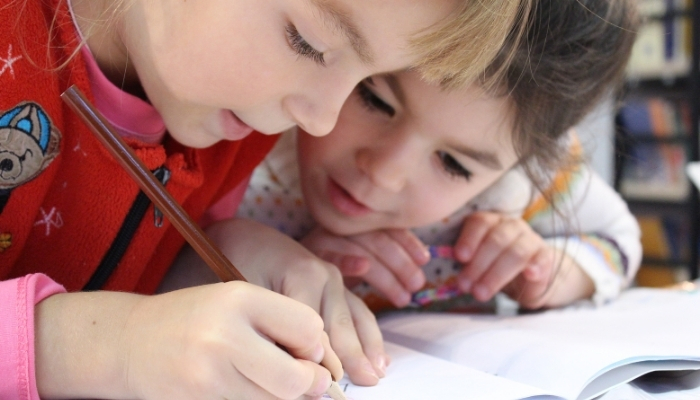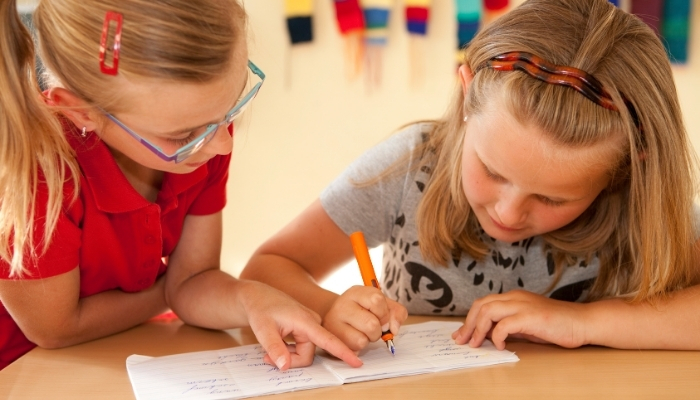Does your child groan at the sight of a writing task? Many parents face this struggle, watching their kids view writing as a boring chore instead of a creative outlet.
That resistance isn’t laziness. It often comes from feeling pressured, overwhelmed, or afraid of making mistakes. And as a parent, it’s frustrating to see your child miss out on skills you know they’ll need.
The good news is that writing doesn’t have to feel like a battle. Making writing fun helps your child fall in love with the process, so they approach tasks with excitement rather than hesitation.
In this guide, you will find out exactly how to make writing fun for your kids with creative strategies, practical tips, and engaging activities that spark lasting motivation.
Key Takeaways
-
Children often resist writing due to fear of mistakes, lack of confidence, or uninspiring tasks.
-
Creative strategies, such as drawing, movement, and games, make writing more enjoyable.
-
Age-appropriate activities keep younger and older kids equally engaged in writing practice.
-
A positive environment with encouragement helps children build lasting motivation.
-
Structured sessions with clear steps turn writing into a skill kids look forward to developing.
Why Kids Resist Writing?

Children often resist writing because it feels overwhelming or pointless to them. You might notice your child complaining about writing assignments or taking hours to complete simple tasks. Understanding the root causes helps you address their concerns effectively.
Fear of making mistakes tops the list of writing obstacles. Your child worries about spelling errors, grammar mistakes, or not having good ideas. This perfectionism creates anxiety that blocks their natural creativity and expression.
Here are the main reasons kids avoid writing:
-
Lack of confidence - They doubt their ability to express ideas clearly.
-
Uninspiring topics - Assigned subjects feel uninteresting or irrelevant.
-
Physical challenges - Hand cramps or difficulty forming letters.
-
Past negative experiences - Critical feedback or low grades.
-
Unclear expectations - Not understanding what makes good writing.
Converting writing into enjoyable activities naturally solves many of these problems. When children enjoy the process, they worry less about perfection. They focus on sharing their thoughts rather than avoiding mistakes.
The benefits of fun writing activities include:
-
Increased confidence - Success in enjoyable tasks builds self-belief.
-
Better creativity - A relaxed mind generates more original ideas.
-
Improved skills - Regular practice through play strengthens abilities.
-
Positive associations - Good experiences create lasting motivation.
-
Natural learning - Fun activities teach grammar and structure without stress
Research from the National Literacy Trust reveals that only one in three children enjoys writing in their free time. This statistic highlights why parents and teachers need fresh approaches to writing instruction. When you make writing enjoyable, you help your child join the minority who genuinely love expressing themselves through words.
Also Read: 50 Creative Writing Exercises to Inspire Younger Writers
How to Make Writing Fun - Tips and Tricks

Converting writing from a tedious task into an adventure requires strategic approaches that tap into your child's natural curiosity. You can revolutionize their writing experience by implementing techniques that prioritize engagement over perfection.
The key lies in removing pressure while adding elements that children naturally enjoy. Games, stories, and creative challenges work better than traditional worksheets. Your child needs to see writing as a form of play rather than work.
Below are some innovative strategies that you can use:
Start with Drawing and Visual Storytelling
Your child's artistic abilities can become the gateway to better writing. Let them draw their story first, then add words to describe what happens. This approach removes the blank page anxiety that stops many young writers.
Drawing activates different parts of the brain and helps children organize their thoughts visually. They can create characters, settings, and plot sequences through pictures before moving on to the written narrative.
Use Voice Recording Before Writing
Modern technology offers simple solutions to writing resistance. Let your child tell their story out loud using a smartphone or tablet recording app. They can transcribe their own words later or work with you to write them down.
This technique separates idea generation from the mechanical aspects of writing. Your child can focus on creativity first and worry about spelling and grammar afterward.
Incorporate Movement and Physical Activity
Research shows that physical activity has significant beneficial effects on motor skills and cognitive functioning in children. You can combine writing with movement to boost engagement and learning outcomes.
Try having your child act out scenes before writing them down. They can march around the room while brainstorming ideas or do jumping jacks between paragraphs. The potential for improved literacy is enhanced when words are taught in context with movement activities, making this approach scientifically sound.
Use the Five Senses Technique
This classic writing strategy helps children add rich details to their stories. Before writing, ask your child to close their eyes and imagine their scene using all five senses.
What do they see, hear, smell, taste, and feel in their story? This sensory brainstorming session provides concrete details they can weave into their writing. The technique is effective for both fiction and nonfiction pieces.
Try the Popcorn Method
Set a timer for short bursts of writing time with brief breaks between sessions. Start with five-minute writing periods followed by two-minute breaks where children can stretch or chat.
This method helps prevent fatigue and maintain high energy levels during longer writing sessions.
Create Writing Games and Challenges
Turn writing into a game your child wants to win. Set up fun challenges, such as writing the silliest story in five minutes or creating a character with the most unusual superpower. Competition and humor motivate children more than standard assignments.
Timer-based activities add excitement while building fluency. Your child learns to write quickly without overthinking every word.
Make It Social and Collaborative
Writing doesn't have to be a solitary activity. Encourage your child to share their work with family members or friends. Positive feedback from real audiences motivates them to keep going.
Collaborative writing projects also tap into children's social nature, helping them enjoy the process while learning from others.
Use Story Cubes and Random Prompts
Purchase story dice or create your own prompt cards with pictures, words, or phrases. Your child rolls the dice or draws cards to generate random story elements that they must incorporate into their writing.
This method alleviates the pressure of generating original ideas while sparking creativity through unexpected combinations.
Establish Writing Rituals and Special Tools
Create special writing time rituals that signal something exciting is about to happen. Let your child choose a favorite pen, use special paper, or write in a designated cozy corner.
These rituals build anticipation and make writing feel important and valued. Some children respond well to writing by candlelight or with soft music playing in the background.
The above-listed tips work because they address the emotional and psychological barriers that prevent children from enjoying writing. When you remove fear and add engagement, your child's natural creativity can flourish.
10 Fun Writing Activities for Younger Kids (Ages 5–9)

Young children learn best through hands-on activities that feel like play rather than instruction. These activities tap into their natural curiosity while building fundamental writing skills. Each suggestion includes simple steps you can implement at home or in the classroom.
Let's explore some activities that work well for this age group:
Weekend News Writing
This classic activity helps children practice recount writing while sharing personal experiences.
How to implement this activity:
-
Set aside 15 minutes each Monday for writing.
-
Let your child choose their most exciting moment of the weekend.
-
Encourage them to include details about who, what, where, and when.
-
Accept drawings mixed with words for beginning writers.
-
Create a special weekend journal that they can decorate.
Show and Tell Journals
Connect writing to your child's favorite possessions or discoveries. They will write about items they plan to share during show-and-tell sessions.
Steps to try this approach:
-
Help your child select their show-and-tell item.
-
Ask questions about what makes this item special.
-
Guide them to write three interesting facts about it.
-
Include drawings or photos to support their writing.
-
Practice reading their writing before the presentation.
Shared Writing on the Board
Create stories together where you act as the scribe while your child provides ideas. This collaborative approach shows them how stories develop while removing handwriting pressure.
How to conduct shared writing sessions:
-
Choose a simple story starter together (Example: "Once upon a time, a purple dragon lived in a library")
-
Let your child dictate while you write on paper or a whiteboard.
-
Ask questions to help them expand their ideas ("What did the dragon like to read?").
-
Read the story back together, celebrating their creativity.
-
Save completed stories in a special folder.
Label the Drawing
Art and writing combine naturally in this activity. Your child creates detailed drawings and then adds labels or captions to explain their artwork.
Implementation steps:
-
Provide large paper and colorful art supplies.
-
Encourage detailed drawings of their interests.
-
Help them identify parts of their drawing to label.
-
Start with single words and progress to sentences.
-
Display finished pieces where others can admire them.
Acrostic Poems
These structured poems will help your child explore vocabulary while working within a supportive framework. Choose words that connect to their interests or current learning topics.
Creating acrostic poems together:
-
Select a meaningful word like their name or favorite animal.
-
Write the letters vertically down the page.
-
Brainstorm words or phrases starting with each letter (Example: For TIGER - Terrifying roar, In the jungle, Great big paws, Every stripe is unique, Roaming free).
-
Help them choose their favorites for the final poem.
-
Illustrate the completed poem for extra engagement.
Sentence Starters
Remove the intimidation of blank pages by providing engaging opening lines. Guide your child to complete stories using given prompts.
Using sentence starters effectively:
-
Offer several options so they can choose their favorite.
-
Create prompts related to their current interests.
-
Set a timer for 10-15 minutes of writing time.
-
Accept any ending, no matter how silly or simple.
-
Share completed stories with family members.
Word Hunt Stories
Turn vocabulary building into an adventure game. Hide word cards around your space and let children collect them to build original stories.
Setting up word hunt activities:
-
Write interesting words on colorful cards.
-
Hide cards in various locations and ask the child to collect five to eight words.
-
Challenge them to use all the words in one story.
-
Provide help connecting words with simple plots.
Fill-in-the-Blank Stories
Similar to Mad Libs, this activity lets children add silly words to existing story frameworks. The humor keeps them engaged while they practice different parts of speech.
Creating fill-in-the-blank adventures:
-
Write simple stories with key words removed.
-
Ask for specific word types without revealing the context (Example: "Give me an adjective describing something funny" without saying it's for "The _____ elephant danced").
-
Fill in the blanks with their suggested words.
-
Read the completed story together and enjoy the laughs.
-
Let them create their own templates for friends.
Animal Diary
Children love animals, making this activity naturally appealing. Your child writes diary entries from the perspective of their pets or wild animals, encouraging creative thinking and empathy.
How to implement animal diaries:
-
Let your child choose their favorite animal.
-
Discuss what that animal might do during a typical day.
-
Write several diary entries from the animal's perspective.
-
Include details about the animal's habitat and behaviors.
-
Create different voices for different animal personalities.
Always remember to celebrate effort over perfection and adjust difficulty levels based on your child's current abilities.
10 Fun Writing Activities for Older Kids (Ages 10–14/15)

Older children need more sophisticated challenges that respect their growing independence while building advanced writing skills. They want to explore complex ideas and express their developing opinions. So, here are some proven activities that can work well with them:
Quick Writes
Quick writes are a perfect activity that builds fluency while reducing overthinking. This activity allows them to practice their writing without fearing perfection.
Implementing quick write sessions:
-
Set a timer for 10-15 minutes.
-
Provide thought-provoking or unusual prompts.
-
Encourage continuous writing without stopping.
-
Accept stream-of-consciousness style responses.
-
Share voluntary readings to celebrate creativity.
Diary in Role
Historical and fictional characters offer rich perspectives for creative writing. Your child explores different viewpoints while practicing narrative techniques and historical empathy.
How to use diary writing successfully:
-
Choose characters from the current reading or history lessons.
-
Research the character's time period and the circumstances surrounding it.
-
Write multiple diary entries spanning different events.
-
Include authentic details about the character's daily life and the challenges they faced.
-
Connect character experiences to modern parallels.
Persuasive Letters
Real-world writing purposes motivate older children more than artificial assignments. They can address genuine issues in their school or community through formal letter writing.
Creating meaningful, persuasive writing:
-
Identify issues your child genuinely cares about.
-
Research the appropriate person or organization to contact for further information.
-
Structure arguments with evidence and examples.
-
Practice formal letter formatting and a respectful tone.
-
Consider actually sending well-written letters.
Collaborative Story Writing
Group writing projects tap into social motivations while teaching cooperation and compromise. Different students contribute various story elements or chapters.
Organizing collaborative writing:
-
Form small groups of three to four writers.
-
Assign different roles, like character development or plot planning.
-
Set clear deadlines for each writing phase to ensure a smooth workflow.
-
Use shared documents for easy collaboration.
-
Celebrate completed projects with public readings.
Newspaper Reports
Current events and school happenings provide authentic writing opportunities. Your child will practice journalism skills by documenting real-life experiences and gathering information.
Developing journalism skills:
-
Choose recent school events or community news.
-
Teach the five W's structure for reporting.
-
Conduct interviews with relevant people.
-
Include quotes and factual details.
-
Create newspaper layouts with headlines and photos.
Mystery Story Starters
Suspenseful openings grab attention while challenging writers to develop logical plot resolutions.
How to Do It:
-
Provide intriguing first sentences or scenarios.
-
Encourage red herrings and plot twists.
-
Discuss the elements that make mysteries engaging.
-
Let them read examples from published mystery writers.
-
Share completed mysteries with family or classmates.
Dialogue-Only Stories
This challenging format forces writers to reveal character and advance plot through conversation alone.
Creating dialogue-driven narratives:
-
Explain how dialogue can show a character's personality.
-
Provide examples from plays or graphic novels.
-
Challenge them to tell complete stories through talking.
-
Discuss how punctuation and tags enhance dialogue.
-
Perform completed stories as dramatic readings.
Rewrite the Ending
Familiar stories provide safe starting points for creative exploration. Your child can change endings of known fairy tales, novels, or movies while maintaining story logic.
Implementing story revision activities:
-
Choose well-known stories that your child enjoys.
-
Discuss what they would change about the original ending.
-
Maintain character consistency while creating new outcomes.
-
Explore how different endings change the story's message.
-
Compare the original and revised versions.
Travel Brochure
Creating a travel brochure will help your kid build creative non-fiction skills. Your child creates promotional materials for imaginary destinations while practicing persuasive writing.
Creating engaging travel brochures:
-
Let them choose real places they want to visit.
-
Research interesting facts and attractions.
-
Include compelling descriptions and persuasive language.
-
Add visual elements like maps or illustrations.
-
Present brochures to family members as travel agents.
These activities succeed because they treat older children as capable writers with valid perspectives and ideas. They provide structure while allowing creative freedom and personal expression. But even the best activities need the proper setup. That’s why knowing how to run a fun writing session makes all the difference.
Also Read: How to Help Your Child Struggling with Writing Skills
Steps to Conduct a Fun Writing Session

Successful writing sessions require careful planning and positive energy to keep children engaged throughout the process. You need to create an environment where creativity flourishes while maintaining enough structure to help children succeed.
The goal is to make each session feel like an anticipated activity rather than an assigned task. Follow these essential steps:
Step 1: Set the Scene
Create a welcoming atmosphere that signals something special is about to happen. Your physical environment and emotional tone influence your child's willingness to participate and take creative risks.
Transform your writing space by clearing distractions and adding inspiring elements. Play soft background music, light a special candle, or arrange comfortable seating. Let your child know that this time belongs to their creativity and imagination.
Step 2: Introduce the Task
Present the writing activity with enthusiasm and clear expectations. Your child needs to understand what they will do without feeling overwhelmed by complex instructions.
Explain the activity in simple terms and share an example if needed. Emphasize that there are no wrong answers and that you value their unique perspective. Set realistic time limits so they know what to expect.
Step 3: Warm-Up Activity
Start with a brief, low-pressure activity that gets their creative juices flowing. This might be a quick brainstorming session, a simple drawing, or a word association game.
Warm-up activities help children transition from other activities into a creative thinking mode. They also build confidence before tackling the main writing task. Keep warm-ups short and directly related to the writing activity.
Step 4: Writing Time
This is the core of your session, where the actual writing takes place. Your role shifts from a supportive observer to a director during this phase.
Move around quietly and offer encouragement without interrupting their flow. Answer questions when asked, but avoid giving too much direction. Let them struggle productively with their ideas while remaining available for support.
Step 5: Optional Sharing
Create opportunities for children to share their work if they choose to do so. Never force sharing, but make it feel special and celebrated when it happens.
Set up a comfortable sharing circle and establish rules for giving and receiving positive feedback. Teach listeners to find something specific to appreciate in each piece. This step builds confidence and community around writing.
Step 6: Reflect and Encourage
End each session with a positive reflection about the writing process and individual effort. Help your child recognize their growth and celebrate their willingness to try new things.
Ask them what they enjoyed about the writing activity and what they learned. Point out specific improvements or creative choices you noticed. Keep feedback focused on effort rather than natural ability.
Step 7: Extend the Activity
Connect the current writing to future activities or real-world applications when possible. This helps children see writing as an ongoing part of their lives rather than isolated assignments.
Suggest ways they might continue the story at home or share their writing with other family members. Create connections to books they are reading or movies they enjoy. Help them see writing as a valuable life skill.
So, now you know that when writing sessions are designed with both structure and play, children walk away with growing confidence and genuine excitement for the next session.
And if you’re unable to maintain that momentum, professional programs are available to offer a space where kids can build on these positive experiences week after week.
Also Read: Best Creative Writing Tools for Kids in 2025
How does FunFox Writers Club Make Writing Fun for Kids?

FunFox lives up to its name by putting fun at the center of everything we do. That is why children around the world love joining our writing community, where learning feels like playing and creativity has no limits.
Our Writers Club converts writing from a dreaded task into an exciting adventure that kids actually look forward to each week. Here's how we make the magic happen:
-
Small group energy - With a maximum of six students per class, each student receives personalized attention while enjoying peer interaction and support.
-
Interactive games and activities - Every lesson includes educational games that teach punctuation, grammar, and spelling through play rather than worksheets.
-
Creative freedom within structure - Students explore different genres like narrative, poetry, and autobiography while building essential technical skills.
-
Positive feedback focus - Our teachers provide process-based feedback that celebrates effort and growth rather than criticizing mistakes.
-
Flexible learning support - Session recordings enable students to revisit lessons and catch up on missed classes, preventing them from falling behind.
-
Community celebration - Virtual and in-person events showcase student achievements and create lasting friendships with fellow young writers.
-
Expert teacher training - Every instructor is specially trained to bring fun learning experiences to life, striking a balance between academic rigor and playful engagement.
Our approach works because we understand that motivated children learn faster and retain more than those who feel pressured or bored. When kids enjoy writing, they naturally practice more and develop stronger skills over time.
Conclusion
When you understand how to make writing fun, your child begins to enjoy the process instead of avoiding it. Simple, engaging activities build confidence, creativity, and stronger writing skills that grow with them.
Remember that every child responds differently to various approaches. Try multiple techniques and pay attention to what sparks joy in your young writer. Celebrate small victories and focus on building positive associations with writing.
And, if you want expert guidance and a supportive space for your child to thrive, the FunFox Writers Club is here to help. Our proven methods combine the fun strategies you have learned with structured curriculum and expert instruction.
Let your kid join thousands of kids who’ve discovered their secret to confident, creative communication with FunFox. Enroll now to start the journey.
FAQ’s
1. What is the 1:3:1 rule in writing?
The 1:3:1 rule guides paragraph structure. Begin with one main idea, add three supporting details, and finish with one sentence that wraps up the thought clearly.
2. What are the four styles of writing?
The four main writing styles are narrative, descriptive, expository, and persuasive. Each serves a different purpose, ranging from storytelling and explaining concepts to expressing emotions or persuading readers.
3. How can parents make writing enjoyable for kids?
Parents can make writing enjoyable by using games, storytelling, drawing, or collaborative exercises. Offering choices, encouragement, and creative prompts helps children approach writing as a playful activity.
4. At what age should children start fun writing activities?
Children can start fun writing activities as early as age five. Blending imagination, drawing, and simple sentences helps them build confidence and creativity while learning foundational writing skills.
5. What are ways to overcome writing resistance in kids?
Ways include low-pressure exercises, movement, prompts, positive feedback, and collaborative projects. Mixing structure with playful activities helps children enjoy writing and practice regularly without fear of mistakes.















